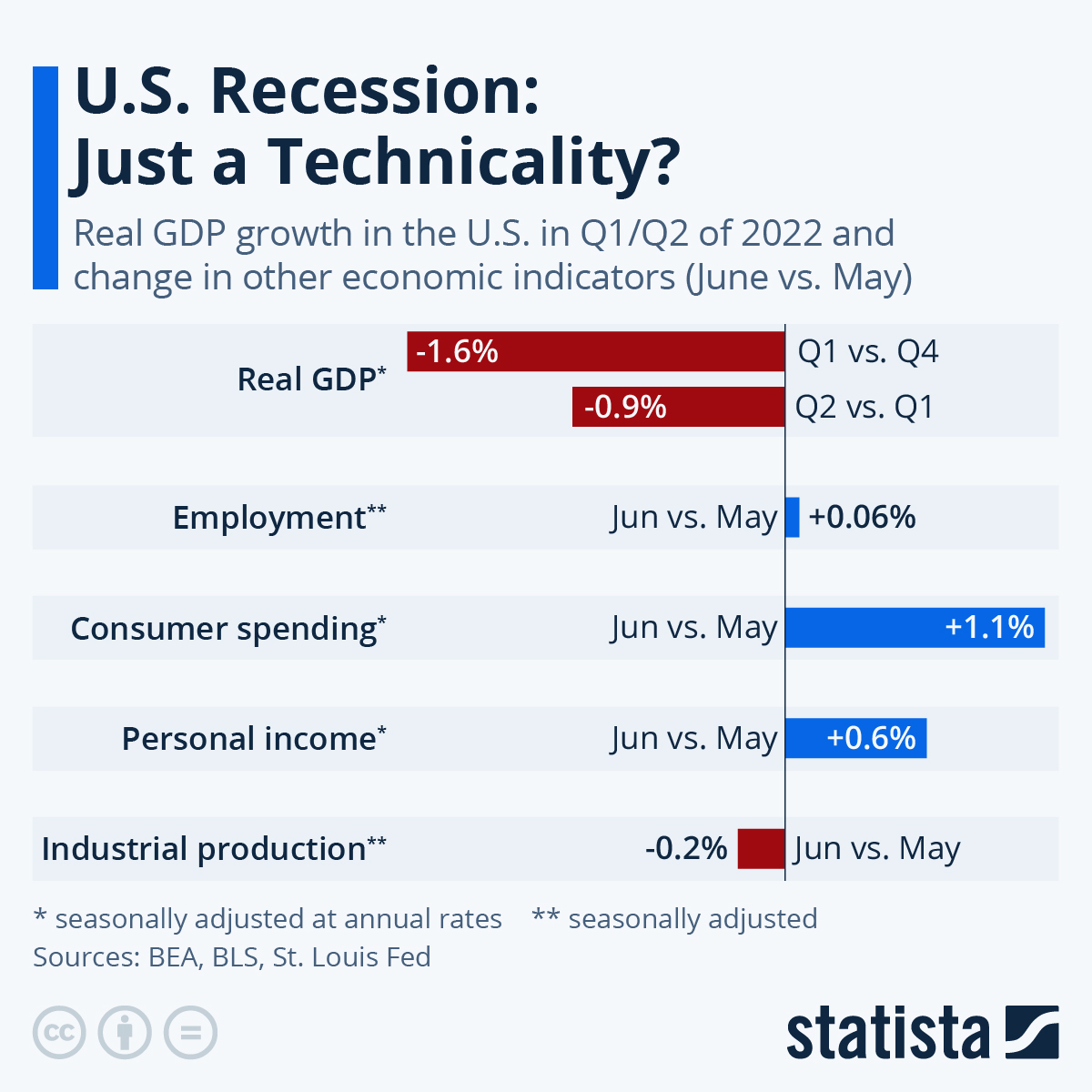After the United States recorded two consecutive quarters of negative growth in Q1 and Q2 of 2022, the Biden administration was quick to point out that the development - even though it constitutes a widespread definition of recession - does not meet the official, less clear-cut classification.
Government analysts might have a point, however, when alleging that a recession only happens when there is “a significant decline in economic activity over more than a few months, which is assessed using several indicators, including the labor market, consumer and business spending, industrial production, and incomes” and that the U.S. has not entered one officially until the National Bureau of Economic Research says so.
Of all the indicators mentioned above, only one signaled economic decline in June, the last month of the period in which the United States entered what is sometimes called a technical recession of two consecutive negative growth quarters. Industrial production declined slightly by 0.2 percent compared to May 2022.
All the other indicators pointed towards expansion but saw only small gains. The slimmest was in employment, which increased by a seasonally adjusted 0.06 percent in June, causing the unemployment rate to stagnate at a still low 3.6 percent. The July figure, which has since been released saw another 0.07 added to seasonally adjusted employment, lowering unemployment to 3.5 percent.
Personal income grew slightly by 0.6% on a seasonally adjusted, annualized basis but fell by 0.3% after taxes and inflation. Nevertheless, consumer spending showed the strongest growth at 1.1% (and 0.1% after adjusting for inflation). Summing up, the current weird economy – as one CNN correspondent put it – is a contradictory one where high inflation and economic contraction exist side by side. To enter stagflation territory – which is an economy that is most often brought about by adverse events – falling employment would have to be added.





















